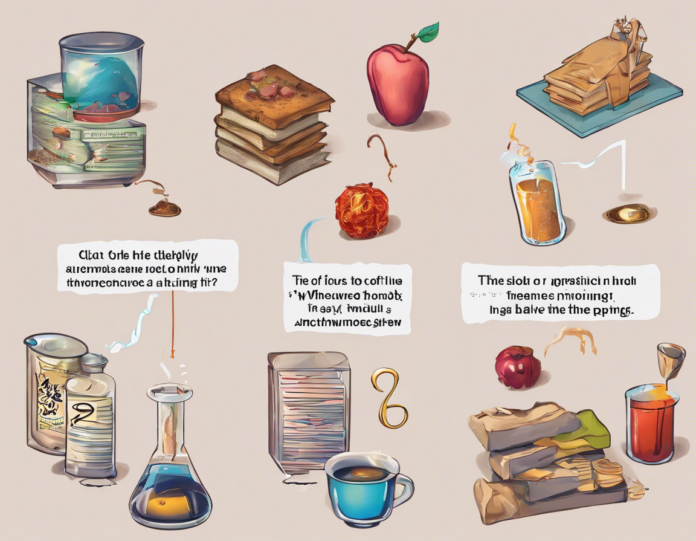Introduction
Understanding the concepts of physical changes in matter is fundamental in the field of science, particularly in chemistry and physics. In this comprehensive guide, we will dive into what physical changes in matter entail, how to identify them, and why they are crucial in scientific studies and everyday life.
What are Physical Changes in Matter?
Physical changes in matter refer to alterations in the form or state of a substance without changing its chemical composition. These changes are reversible, meaning that the substance retains its original properties even after undergoing the transformation. Examples of physical changes include changes in state (solid to liquid, liquid to gas), changes in shape or size, and dissolving.
Identifying Physical Changes
- Change in State: One of the most common indicators of a physical change is a change in state. For example, when ice (solid) melts into water (liquid), it is a physical change as the chemical composition remains unchanged. Similarly, when water evaporates into steam (gas), it is another example of a physical change.
-
Change in Appearance: Observing a noticeable difference in the appearance of a substance can indicate a physical change. For instance, when a piece of paper is torn into smaller pieces, its appearance changes, but it is still paper chemically.
-
Temperature Change: Physical changes often involve changes in temperature. Heating or cooling a substance can lead to changes in its physical state without altering its chemical properties. For instance, melting ice cream is a physical change where the temperature increases.
-
Solubility: When a substance dissolves in another substance, it is considered a physical change. For example, when sugar dissolves in water, it is still sugar chemically, even though it is distributed throughout the water.
Why Physical Changes Matter
Understanding physical changes in matter is essential for various reasons:
- Product Development: In industries such as food and cosmetics, knowing how substances can change physically helps in product development.
-
Material Science: Engineers and material scientists rely on understanding physical changes in materials to design products that are durable and efficient.
-
Chemical Analysis: In chemistry, differentiating between physical and chemical changes is crucial for accurate chemical analysis and testing.
Distinguishing Physical Changes from Chemical Changes
While physical changes alter the appearance or state of matter, chemical changes result in the formation of new substances with different chemical compositions. It is vital to differentiate between the two for accurate scientific observations and experiments.
Examples of Physical Changes
- Boiling or Freezing of Water: Water changing states from liquid to gas (boiling) or liquid to solid (freezing) are classic examples of physical changes.
-
Crushing a Can: Flattening a can is a physical change as the substance remains the same (aluminum), but its shape changes.
-
Melting Chocolate: When chocolate melts, it is a physical change as the chemical components of the chocolate remain the same even in liquid form.
Common Misconceptions about Physical Changes
- Some may mistakenly believe that all changes in state are chemical changes, but this is not accurate. Changes in state, like melting or freezing, are physical changes.
- Another misconception is that changes in appearance always indicate a chemical change. While some changes in appearance may involve chemical reactions, many changes in appearance are purely physical.
FAQs (Frequently Asked Questions)
Q: How can I tell if a change is physical or chemical?
A: Physical changes typically involve changes in state, appearance, or temperature without altering the chemical composition of a substance. Chemical changes, on the other hand, result in the formation of new substances with different properties.
Q: Is cutting a piece of paper a physical change?
A: Yes, cutting a piece of paper is a physical change as the chemical composition of the paper remains the same despite its altered appearance.
Q: Are changes in color always indicative of a chemical change?
A: Not necessarily. Changes in color can be both physical and chemical changes. Some substances change color due to physical interactions, while others change color as a result of chemical reactions.
Q: Can physical changes be reversed?
A: Yes, physical changes are reversible, meaning that the original substance can be restored without altering its chemical composition. For example, melting ice can be reversed by freezing the water.
Q: Why are physical changes important in everyday life?
A: Physical changes play a crucial role in various aspects of daily life, from cooking (melting butter) to cleaning (dissolving salt in water). Understanding physical changes helps us comprehend the world around us and make informed decisions in different situations.
In conclusion, grasping the concept of physical changes in matter is pivotal in scientific fields and everyday life. By recognizing the characteristics and examples of physical changes, we can deepen our understanding of the properties of matter and their transformations.
